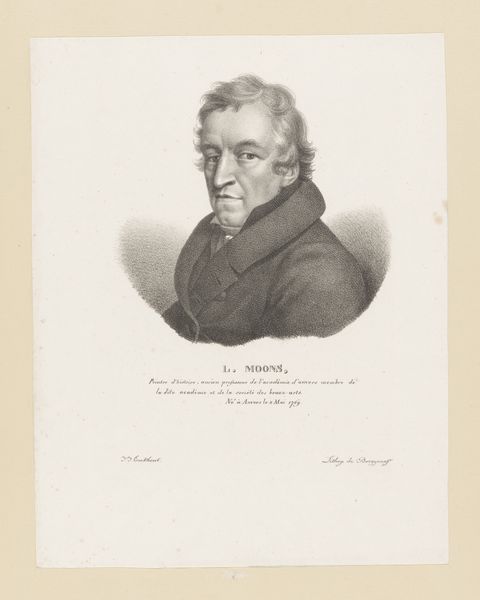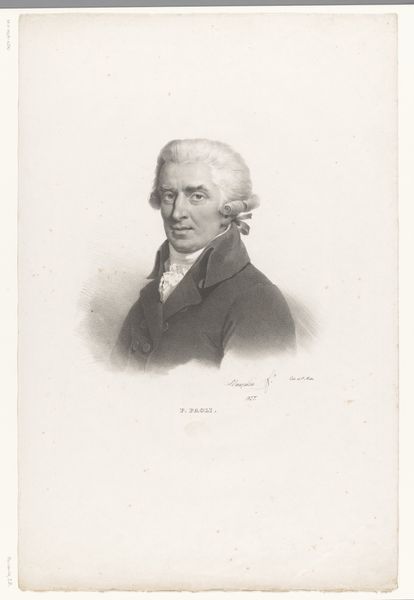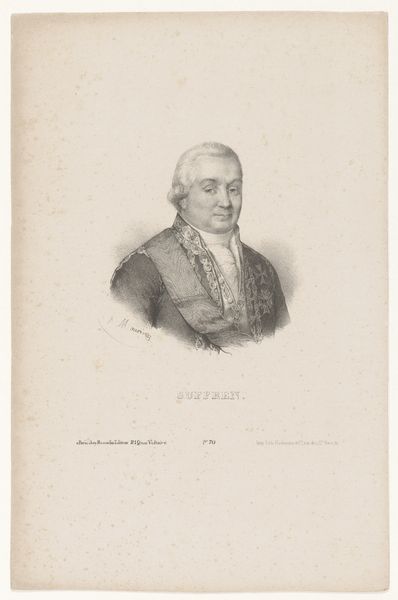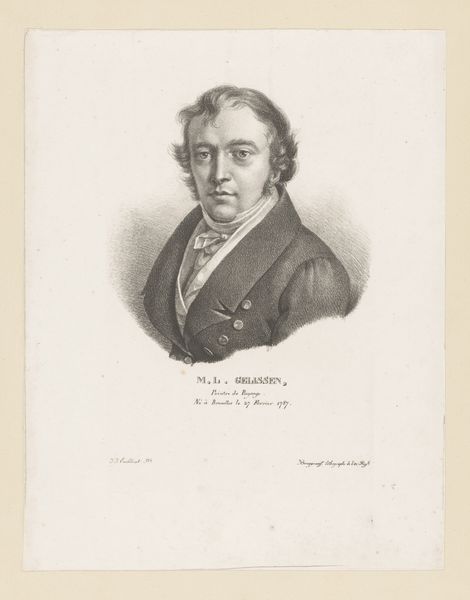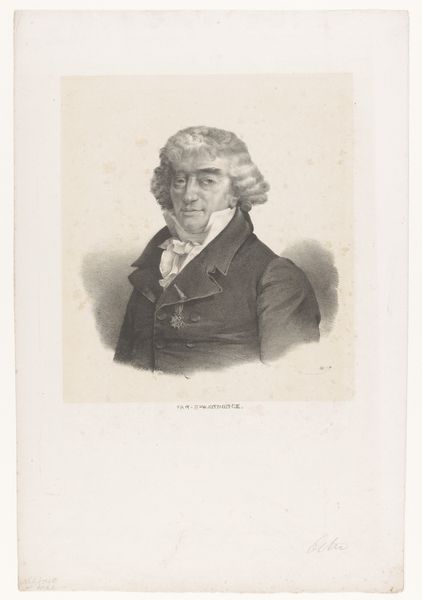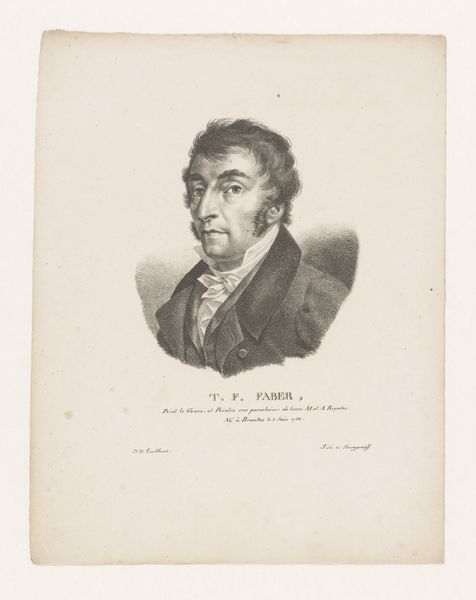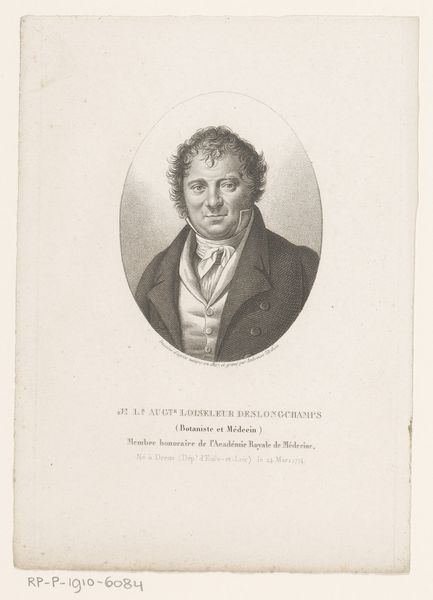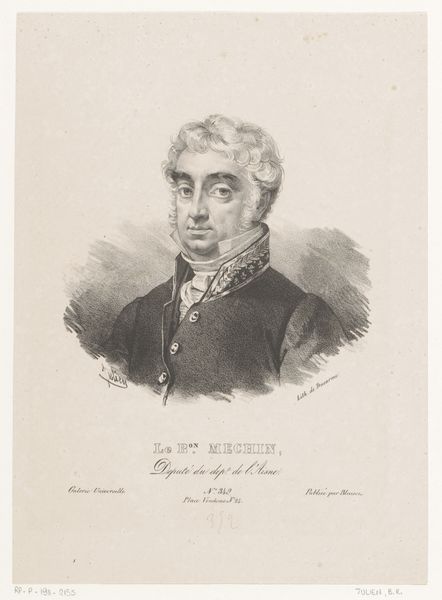
drawing
#
portrait
#
drawing
#
neoclacissism
#
realism
Dimensions: height 302 mm, width 238 mm
Copyright: Rijks Museum: Open Domain
This is a portrait of Jan Blom by Guillaume Philidor Van den Burggraaff, made using lithography, a printmaking process that democratized image production in the 19th century. Lithography involves drawing on a flat stone or metal plate with a greasy substance, then treating it so that ink adheres only to the drawn areas. This allowed for relatively quick and inexpensive reproduction of images, making art more accessible to a wider audience. Look closely, and you can see how the texture of the stone, even the artist’s mark-making, has been transferred to the paper. The choice of lithography here isn't just about convenience; it reflects a shift in how art was created and consumed. Unlike traditional engravings that required highly skilled artisans and lengthy production times, lithography opened up new possibilities for artists to create and distribute their work, tying artistic production to broader social issues and new technologies of the time. Considering the materials, making, and context helps us understand the full meaning of this portrait, breaking down the old separation of fine art and craft.
Comments
No comments
Be the first to comment and join the conversation on the ultimate creative platform.


